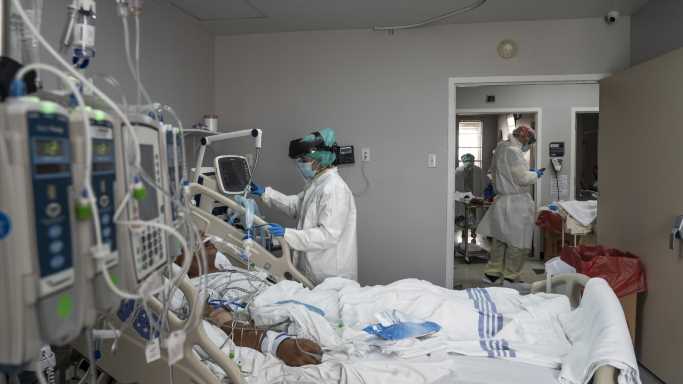The U.S. has reported more than 30.8 million confirmed COVID-19 cases as of Apr. 13. There have been more than 556,000 reported deaths from COVID-19-related causes — the highest death toll of any country.
The extent of the spread of the novel coronavirus continues to vary considerably from state to state, and from city to city. Even as the number of daily new cases is flattening or even declining in some parts of the country, it is surging at a growing rate in others.
Nationwide, the number of new cases is growing at a steady rate. There were an average of 20.7 daily new coronavirus cases per 100,000 Americans in the week ending Apr. 13, essentially unchanged from the week prior, when there were an average of 19.1 daily new coronavirus cases per 100,000 people.
Metropolitan areas with a high degree of mobility and a large population may be particularly vulnerable to outbreaks. While science and medical professionals are still studying how exactly the virus spreads, experts agree that outbreaks are more likely to occur in group settings where large numbers of people routinely have close contact with one another. Cities with high concentrations of dense spaces such as colleges, correctional facilities, and nursing homes are particularly at risk.
The city with the highest seven-day average of new daily COVID-19 cases per capita is in Michigan. In the Detroit-Warren-Dearborn, MI, metro area, there were an average of 88.5 daily new coronavirus cases per 100,000 residents in the week ending Apr. 13, the most of any U.S. metro area. Other cities where COVID-19 is growing the fastest include Jackson, MI; Flint, MI; and Monroe, MI.
To determine the metropolitan area in each state where COVID-19 is growing the fastest, 24/7 Wall St. compiled and reviewed data from state and local health departments. We ranked metropolitan areas according to the average number of new daily COVID-19 cases per 100,000 residents in the seven days ending Apr. 13. Data was aggregated from the county level to the metropolitan area level using boundary definitions from the U.S. Census Bureau. Population data used to adjust case and death totals came from the U.S. Census Bureau’s 2019 American Community Survey and are five-year estimates. Unemployment data is from the Bureau of Labor Statistics and is seasonally adjusted.
Source: Read Full Article
